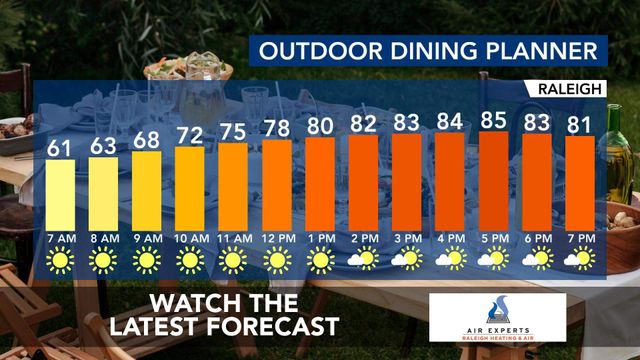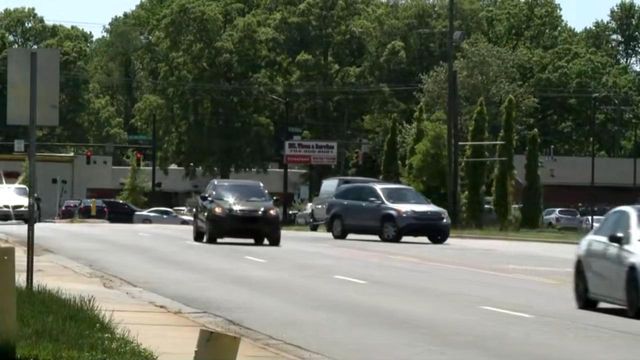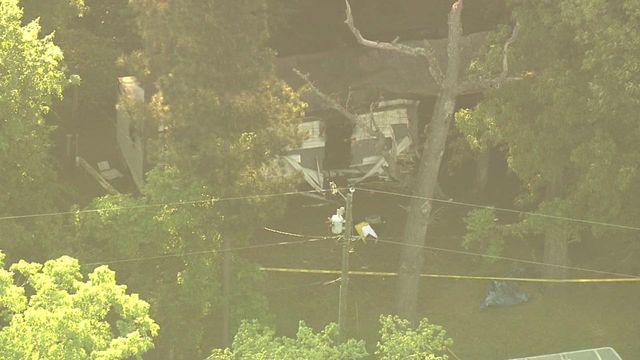Ask Anything: 10 questions with State Schools Superintendent June Atkinson

When will seat belts be put in school buses? Thanks. ‑ Darren J. Day, Franklinton
Lap and shoulder belts such as the ones we use in our cars have been available on school buses for only a few years.
In 2003, the state equipped 13 new school buses with lap/shoulder belts to evaluate. The results are that elementary students are inclined to wear the belts; middle school and high school students are not.
There was a law introduced in the state Legislature last year that would require lap/shoulder belts on all new school buses. This bill was changed to a study bill and referred to the General Assembly’s Child Fatality Task Force. The report acknowledged that parents expect belts on buses but that there have not been on-board school bus fatalities in North Carolina since the early 1990s and there was no recommendation for action.
The cost of lap/shoulder belts on buses is over $10,000 per bus (a bus costs about $80,000) and that amount would have to be appropriated by the Legislature.
I am a school teacher. I transferred from a county with lots of resources to a low-wealth county. The disparity of monies available is very apparent. Is there anything that can be done to help the low-wealth counties be more on an equal status? ‑ Lynn Georgiady, Lillington
The General Assembly recognized this kind of disparity several years ago and began the low wealth supplemental funding in 1991. That funding program is now fully funded and provides more than $195 million to districts that qualify for it. These funds are intended to help address the disparities in local supplements and local funding because of differences in the tax base in different communities.
If the school is benefiting so much from the state lottery and is always given a huge budget by the state, how come the parents still have to supply our children with school supplies such as tissues, hand sanitizer, hand soap, pencils, paper, batteries and even tennis balls for the bottom of chairs? What is the money going for? ‑ Sandra Stockdill, Dunn
The NC Education Lottery provided gross sales receipts just under $890 million in its first fully operational year. In 2006-07, lottery revenue distributions for education totaled over $325 million. Of the annual lottery sales, revenue is allocated as follows: 50 percent – prizes; 15 percent – lottery administration; 35 percent – programs. Of the amount provided for programs, 40 percent goes to school construction, 10 percent to scholarships and 50 percent to reduction in class sizes in the early grades and to support academic pre-kindergarten programs for at-risk 4-year-olds.
Local school districts have discretion over how they spend other funds provided to them by the state, and you can see how these funds are used in the “Highlights of the North Carolina Public School Budget” document produced by the Division of School Business, N.C. Department of Public Instruction.
As you know, North Carolina uses a tenure-based system for teacher pay. However, a lot of states are beginning to consider merit-based pay over the old tenure system. What are your opinions on merit-based pay for teachers? Do you feel that it would have a greater impact on student and teacher accountability if teachers received individual merit pay instead of tenure pay and school‑wide ABC bonuses? ‑ Justin Good, Raleigh
There have been many attempts, initiatives and pilots in the past to find a good way to provide merit-based pay to public school teachers. There has yet to be one that has lasted for very long for a number of reasons.
It is difficult to evaluate individual teacher performance fairly because students are taught and influenced by a variety of teachers within each school.
The ABCs incentive awards are one way to recognize performance, and these are given to all teachers within a school that meets specific student achievement targets.
I do support this and I support incentives for teachers who are willing to teach in schools that are difficult to staff because of their location or in subjects that are in high demand.
Why are students not required to provide proof of citizenship in public schools? I have asked many people in my county about this, but no one seems to want to touch the subject. Title I and More at Four Pre‑K programs have a selection process, and slots are limited. How and why can these slots be offered to illegals when there are many children in need who are here legally? ‑ Christy Harris, Oxford
Student eligibility for enrollment in school is not based on immigration status, and local districts are, in fact, prohibited from inquiring about the immigration status of a student or family. The U.S. Supreme Court ruled in Plyler v. Doe [457 U.S. 202 (1982)] that undocumented children and young adults have the same right as U.S. citizens and permanent residents to attend public primary and secondary schools. A student's undocumented status refers to the inability to provide a Social Security number, green card, visa or other documentation indicating legal residence in the U.S.
Why did Wake County change the birthday cutoff from Oct. 16 to Aug. 31? As a parent whose child must spend an additional year in preschool when he is ready for kindergarten, I'm a little frustrated. Shouldn't this have been run by the voters or some school boards? ‑ Laura, Raleigh
The cut-off age for students to enter kindergarten is set for the state as a whole by the North Carolina Legislature. In setting the cutoff point, there will always be some children whose birthdays come close to the date. The recent change in the entry age law means that students must be 5 by Aug. 31 in order to enter kindergarten in 2009. The Oct. 16 cut-off date will remain in effect for those entering kindergarten in 2008. There are provisions for gifted 4-year-olds who do not meet the age qualification to enter kindergarten early. These involve testing and other measures to demonstrate their readiness. Check with your school district office for more information on that option.
At what point does busing become cost-prohibitive, with the current cost of fuel? Wouldn't it make more sense for buses to run shorter routes and transport children to the closest school rather than a school 20 miles away? ‑ Alan Anderson, Rocky Mount
Local school boards and their staff members determine how students are assigned to schools and the bus rides that may be necessary. When the state provides transportation allotments to local school boards, we assume that the school assignment for students is a local decision. We consider the distance students live from the schools – districtwide – when figuring the allotment amount for each school district.
N.C. schools are placing students with disabilities in segregated schools at a higher rate than the national average, a rate that is continuing to increase. What do you plan to do to stop this alarming trend and to support the education of children with disabilities alongside their non‑disabled peers to the maximum extent possible? ‑ Kristine Sullivan, Durham
North Carolina actually is performing better than the national average with regard to students placed in separate schools and special facilities. It also is significantly better than the national average in placing students in inclusive settings in regular public schools.
According to Fall 2006 data from www.ideadata.org, the national average for placing students with disabilities in separate schools and special facilities was 5.08 percent. North Carolina's rate, according to the same source, was just 2.52 percent. While the state's rate has increased slightly over the past year, it is still well below the national average. This increase, a total of around 100 students from the more than 192,000 students with disabilities across the state, is primarily attributed to an increase in homebound placements. To address this, the Department of Public Instruction will provide targeted technical assistance on placement decision-making.
Why is there so much unnecessary curriculum in mathematics? Much of what we learn in math will never be used for the rest of our lives. Why should we have to learn it? ‑ Scott, Cary
Recently, the State Board of Education adopted new standards that focus on the most essential skills and knowledge that students will need to be successful in the 21st century. In mathematics, the level of expertise and knowledge that students need for success at the community college or at the university level continues to increase. Today, many community college programs require students to enter with a proficiency level at an Algebra II level or better. In addition, however, students have some opportunity to select mathematics courses.
Dr. Atkinson, How does the state support new teachers? I believe the issue is not about teacher recruitment, but teacher retention. As a full‑time, fully released mentor, I wonder why each district isn't able to make this happen. Could the state provide extra funds to districts to support new teachers full‑time? ‑ Matthew, Durham
North Carolina provides $100 per month for a teacher to mentor new teachers. In addition, the SBE has requested funds for a number of years to provide one mentor for every 15 new teachers. We also have literacy coaches in 200 of our middle schools to help teachers who are working with middle school students who may not have strong reading skills.
Click here to Ask Anything! |









